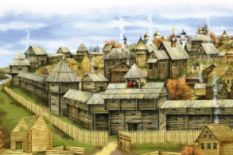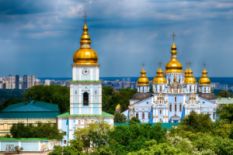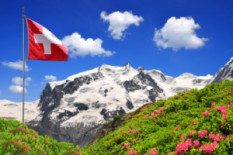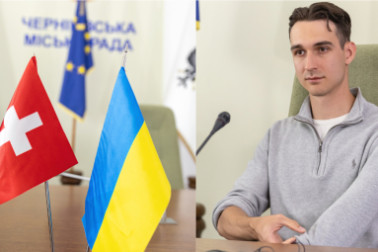Origin of the Word “Cossack”
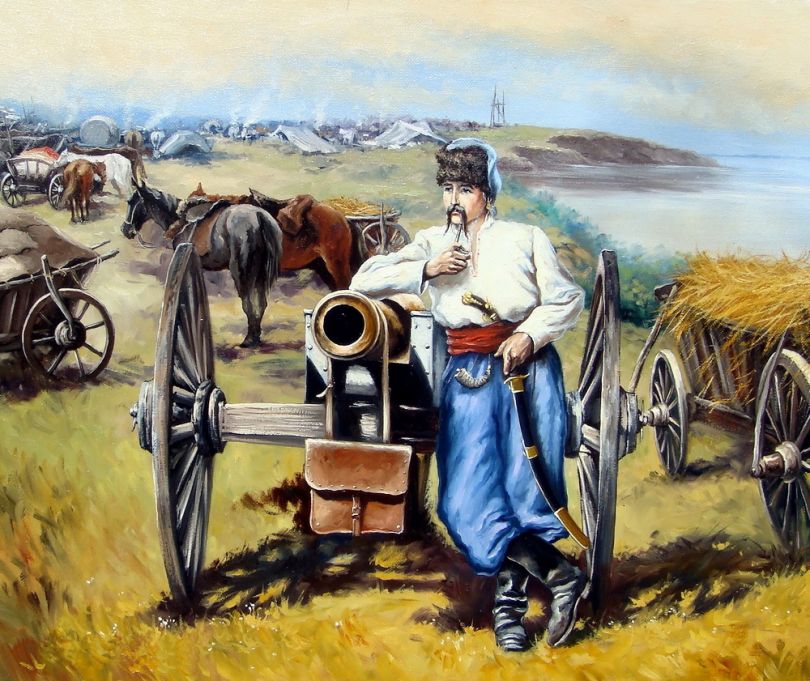
Scientists have numerous theories about the origin of the word “Cossack.” However, there are two most popular versions. The first theory says that the term “Cossack” came from Polovets word “Cosac,” that means “guard.” This word can be found in “Codex Cumanicus” – the well-known literary monument of the Polovets language, written at the beginning of the XIV century. The second version insists that this word originates from the Turkic word “Qazaq,” translated as “free person,” “adventurer,” “seeker of adventures.” There are also many other versions, for example, the theory that the word “Cossack” came from the Ukrainian word “koza” (“goat”) because the Cossacks were high-speed and could get anywhere – just like this animal. As such a version may sound funny, we should not take it seriously.
A society without Police and Prisons
It might seem impossible, but Zaporozhian Sich, a really large community, did not have any analogs of policemen or jailers like other big cities. This fact can be explained by the severe laws in the Cossacks` army. If a Cossack committed theft or murdered one of his sworn brothers, he had to pay for it with his life in a brutal way. A villain was buried alive together with his victim or was beaten with clubs to death. Such a harsh system of penalties ensured perfect discipline in the community.
Was it Easy to Become a Cossack?
It was definitely not. To join the Cossacks` army, a young man had to undergo severe training and to pass difficult exams. During seven years, a new soldier had to learn swordcraft, shooting, horse riding, fighting techniques, etc. The studies were supervised by experienced warriors and military commanders. Apart from taking care of physical strength and agility, the Cossacks had to evolve their intellect. They were not just perfect warriors; the Cossacks learned reading and writing, basic concepts of medicine, and astronomy. The most talented Cossacks even studied fundamental principles of diplomacy and foreign languages.
The First Republic

Zaporozhian Sich is considered one of the first democratic unities in the world. The Ukrainian Cossacks made all decisions about their life and activities in public meeting through voting. Sich was also the first political institution on the territory of Ukraine. It had all the characteristics of a republic, and was completely independent, and most European countries tried to establish diplomatic connections with it.
Open Doors
The Cossacks had a fascinating tradition: the doors of their huts (called “curtains”) were always open so that any traveler or passer-by could get inside, spend a night, have dinner and then continue his journey. It was possible even if the hut's owner was not at home. However, guests were not allowed to take anything out of the house. Otherwise they had to suffer a penalty. By the way, if someone found a lost item in Sich, he had to tie it to a pillar. If the original owner of this item did not take it away in three days, the item passed into the possession of the one who had found it.
Sober Army
Of course, sometimes Ukrainian Cossacks consumed strong drinks. But in general, they loved different kinds of entertainment: many played musical instruments, danced, sang songs, and organized demonstrational fights to have fun. Also, the Cossacks were often busy with household work – no one else could do this because there were no women in Zaporozhian Sich! As for drinking alcohol during military expeditions, it was strictly prohibited. Violating this rule was considered treason and could even lead to the death penalty.
Cossacks` Women
Women were not allowed to Zaporozhian Sich, but it was not because the Cossacks` had no respect for them. Quite the opposite: the Cossacks felt high respect and responsibility for women and family obligations. Because the life of Cossacks was full of dangers, their families were always at risk of losing beloved fathers and husbands. When a Cossack went on a military expedition, his wife was left alone and had to raise children and do all household duties independently. That was the reason why many Cossacks avoided marriage and family. They dedicated their whole lives to Zaporozhian Sich; many Cossacks even took a vow of chastity. However, some Cossacks had families and wives. In that case, Cossacks preferred to get married by age 20, so they could have children before joining Zaporozhian Sich's army.
Magicians
The Cossack community has very unusual members called “characternyky.” These men were believed to have magical and healing powers. They were the successors of the ancient Pagan wizards that could tell the future and possessed secret knowledge. Characternyky in Zaporozhian Sich was involved not only in magic rituals but also in healing wounded warriors and in the process of physical and psychological training of the future Cossacks.
Mustache and Scalp Lock

Stylish scalp locks and mustache were integral features of the Cossacks` style. Scientists believe the Cossacks have inherited this tradition from their Pagan ancestors. The practice of shaving face and head had come to Kyiv Rus from the local tribes, and with time it was passed to Zaporozhian Cossacks. There are also other funny theories about the origins of the Cossacks` scalp lock. Some Cossacks thought they were sinful and could not get to Heaven, so they hoped that God would drag them out of hell by their lock; others believed that if they died in a battle, an angel would take them by lock and pull them to heaven.
Cossacks` Entertainment
Diverse entertainment activities were an essential part of the Cossacks` culture. The warriors loved playing different games to have fun and test their skills simultaneously. For example, the Cossacks played tug-of-war, which allowed them to check their physical strength. They also enjoyed sack races and many other games and contests that helped test strength, reaction speed, and creativity. As for more art-related kinds of entertainment, the Cossacks loved not only to dance and sing songs but also to tell stories. Sometimes in the evenings, the Cossacks gathered around the fire and held the contest of narratives. The one who could make up the most exciting and funny story won.
Hopak: Dance or Martial Art?

Talking about the Cossacks, we cannot skip the hopak dance, which symbolizes both Ukraine and Zaporozhian Cossacks' culture. Not everyone knows hopak is an exciting and beautiful dance and martial art. So-called “combat hopak” unites punch and throw techniques with dance plastic. Grab and block techniques and kicks are also typical for this martial art. Modern combat hopak was developed based on traditional Cossacks` fighting methods.
As we can see from the history of the Cossacks, Zaporozhian Sich was not just a military unit – it was a whole state with its laws and customs kept by the courageous warriors.
Photo source: shutterstock.com. All photos belong to their rightful owners.
